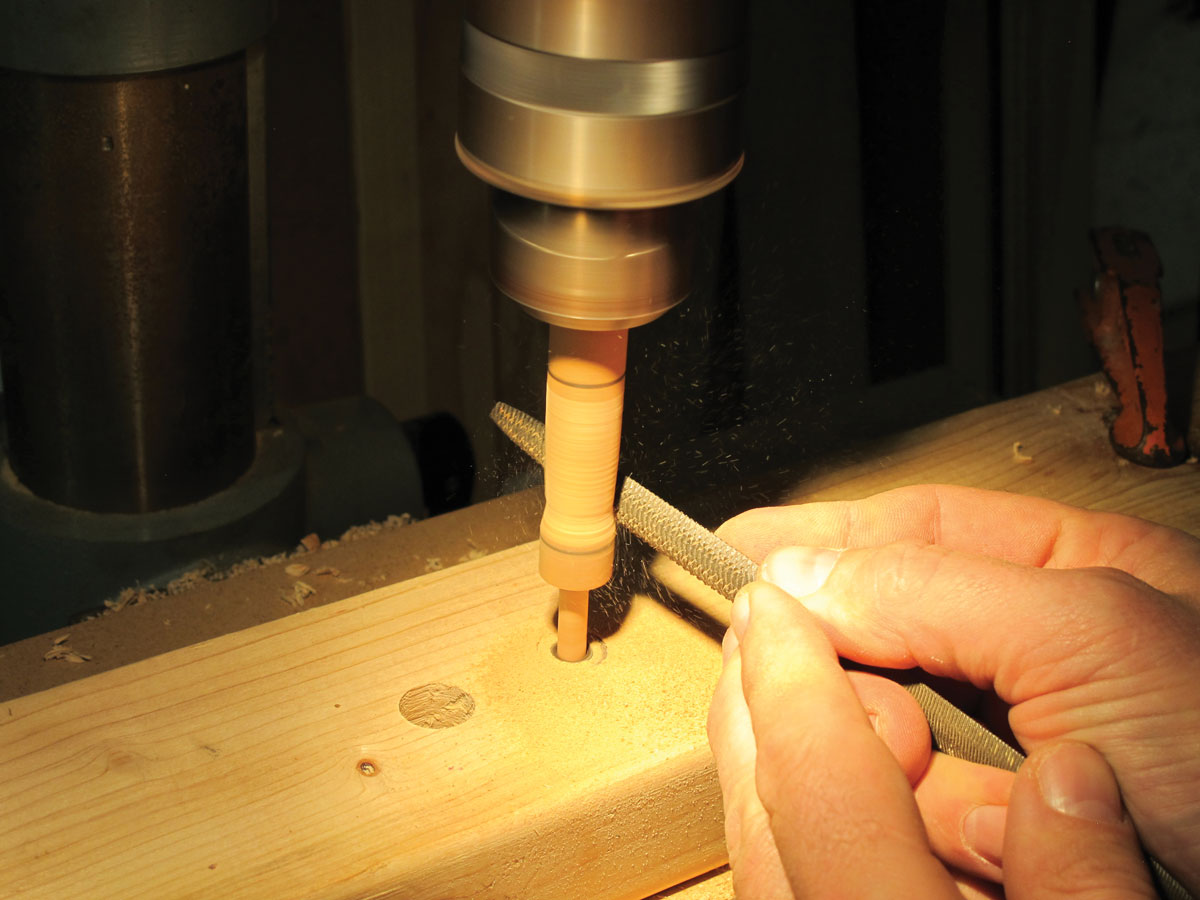Whenever I need a small turned item, I resort to tricking my drill press into thinking it’s a lathe. This method is slower — you abrade the material using sandpaper or files instead of shaving it away with chisels — but with patience you can get good results. Here’s how I do it, using a common top guide bearing from a router bit.
CAUTION:
This procedure is potentially dangerous and can quickly void the warranty on your fingers. If at any point the little voice inside your head starts saying “You shouldn’t be doing this” or “Uh-oh,” listen to it and stop. You have been warned.


















